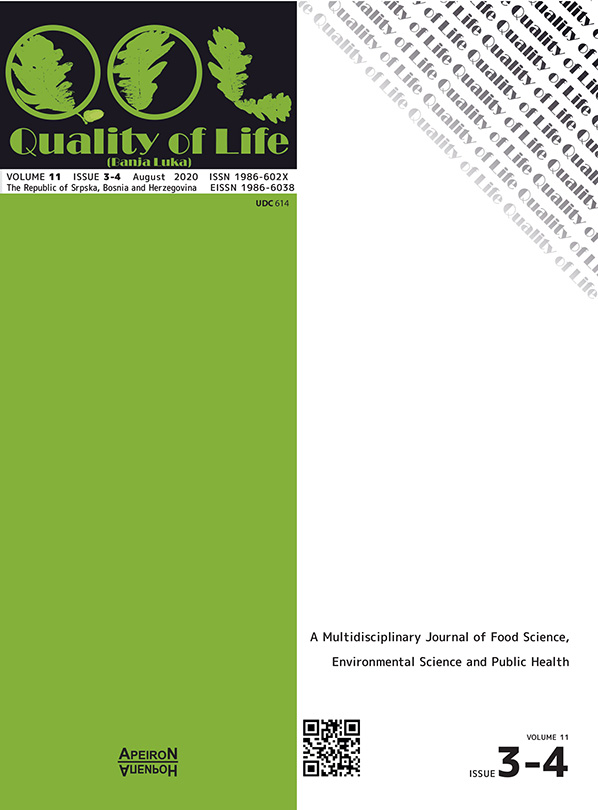Study of the Influence of Solvent and Column Temperature on the Separation Effectiveness of LMW Glutenins by RP-HPLC
DOI:
https://doi.org/10.7251/QOL2003084CAbstract
Gluten contains two fractions, which are represented in equal amounts. These are soluble gliadins and insoluble glutenins. Glutenin fraction is responsible for the dough and gluten viscoelastic properties. The dominant type of protein in glutenins are LMW glutenins.
The aim of this paper was to examine the influence of solvent type and column temperature on the separation effectiveness of LMW glutenins. Extraction was performed with 50% (v/v) ethanol, 1-propanol and isopropanol to which Tris-HCl (0.05 mol/l, pH=7.5), urea (2 mol/l) and dithioerythritol (1%) were added. Separation of LMW glutenins was performed on HPLC Agilent Techologies 1260 Infinity apparatus.
After the extraction with 50% (v/v) ethanol, 1-propanol and isopropanol to which Tris-HCl (0.05 mol/l, pH=7.5), urea (2 mol/l) and dithioerythritol (1%) were added, the highest number of proteins was observed after extraction with 50% (v/v) 1-propanol and at a column temperature of 40°C (Xsr=20, respectively RC=69.56%), and the lowest number at a column temperature of 45°C (Xsr=14.17, respectively RC=66.42%). The obtained results were read at a wavelength of 210 nm.
After the extraction of LMW glutenins with 50% (v/v) ethanol, 1-propanol and isopropanol to which Tris-HCl (0.05 mol/l, pH=7.5), urea (2 mol/l) and dithioerythritol (1%) were added and detected at a wavelength of 280 nm, the highest number of proteins was observed after extraction with 50% (v/v) isopropanol and at a column temperature of 50°C (Xsr=24.17, RC=56.47%) and the lowest number of proteins after extraction with 50% (v/v) ethanol and at a column temperature of 50°C (Xsr=12.17, RC=56.45%).
